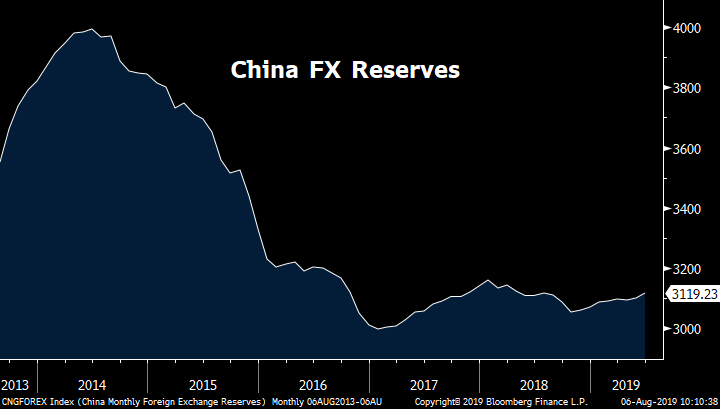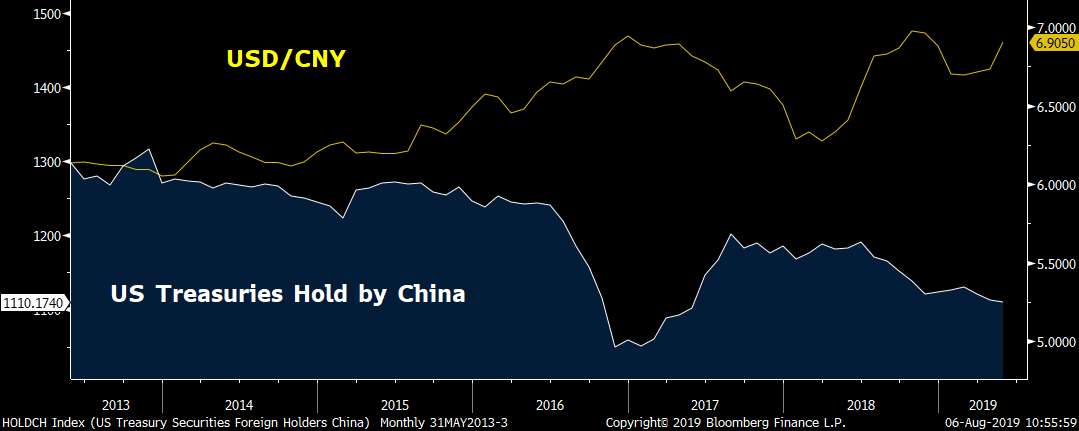

Editor's Note: Jimmy Zhu is a chief strategist at Fullerton Research. The article reflects the author's opinion and not necessarily the views of CGTN.
The U.S.Treasury department's decision to label China as a foreign exchange (FX) manipulator is a symbolic move without much implications. To some extent, such accusation doesn't have any reasonable basis.
Manipulating yuan?
The United States Trade Representative (USTR) report accuses China of taking concrete steps to devalue its currency while maintaining substantial foreign exchange reserves despite active use of such tools in the past. Such comments are simply not factual. Under the USTR rule, one indicator of currency manipulation is when an entity consistently purchases the U.S. dollar or its treasuries to weaken its own currency. Under such circumstances, a country's FX reserves, or its U.S. Treasuries' holding should rise, not fall.
However, neither of the two have happened in China. In fact, China's FX reserves have fallen by nearly one trillion U.S. dollars since 2014 when depreciation pressure on the yuan emerged. Falling FX reserves simply means that China has been selling its foreign currency, among which U.S. dollar-denominated assets are significant.

Source: Bloomberg
When the yuan depreciated 6.5 percent against the dollar in 2016, China FX reserves dropped 320 billion U.S. dollars in that year, and a similar correlation between the two was seen in 2015. This shows that yuan depreciation was primarily driven by capital outflows on those days, not the central bank. The yuan gained 6.8 percent against the dollar in 2017, and its foreign reserves rose to 129 billion U.S. dollars in this period.
Another set of data from the U.S. Treasury shows a similar pattern. It shows that China sold 188 billion U.S. dollars worth of U.S. government bonds in 2016 and then increased its holdings by 127 billion U.S. dollars in the following year. The chart below shows an inverse correlation between the U.S. dollar and the Chinese yuan, and China's holding of US Treasuries, which reflects the yuan's weakness in past years, is not due to the rising U.S. Treasuries holding.

Source: Bloomberg
Increasing policy tools is not equal to FX manipulation
In the USTR's overnight statement, it also says that Chinese authorities have acknowledged that they have ample control over the exchange rate and that the People's Bank of China (PBOC) said it "has accumulated rich experience and policy tools, and will continue to innovate and enrich the control toolbox."
However, most of the PBOC's tools accumulated in past years aim to defend its currency, not devaluate it. Just hours ago, the PBOC said it will issue 30 billion yuan of central bank bills in Hong Kong on Aug 14. Among the total, 20 billion yuan will mature in three months, and 10 billion yuan will mature in a year.
One of the key objectives on bill issuance is to tighten the offshore yuan interbank liquidity, a move to arrest the currency deprecation pressure. CNH Hibor fixings for the three-month tenor today rose 20 basis points (bps) to 2.48 percent, from 2.28 percent yesterday. U.S dollar to offshore yuan rose to as high as 7.14 in the earlier trading hours, but it has now dropped to 7.08 amid tightening liquidity in Hong Kong.
Yuan weakening due to yield spread narrowing, policy divergence
The yuan deprecation pressure started in 2014 when the Fed began its monetary tightening cycle. The U.S. decision to raise the interest rate in the past few years not only caused the deprecation pressure on the yuan but also brought significant downward pressures on other emerging market (EM) currencies.
Despite the Fed cutting the interest rate cut by 25 bps last week, Powell's stance on its upcoming monetary policy remains neutral. He rejects the view that major policy easing after the cut in July would be necessary and defined the rate cut last week as just a mid-cycle policy adjustment. If the Fed decides not to cut the rate in September, the dollar index may climb to the above-100 territory.

Copyright © 2018 CGTN. Beijing ICP prepared NO.16065310-3
Copyright © 2018 CGTN. Beijing ICP prepared NO.16065310-3